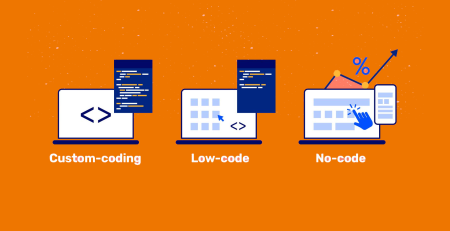What is A/B testing?
How do you determine which modifications to your product or service would improve its performance? If you still rely on your preferences, intuition, or market research, you should read this post right away! A/B testing is the most effective method for satisfying your customers and increasing your revenue!
In 2008, a Microsoft employee had an idea: rather than loading the service in the same tab, start a new browser tab each time the user clicks on a Hotmail link. But, even for such tiny modifications, Microsoft is not a firm that makes rash decisions. As a result, they conducted an A/B test to see how the upgrade would affect user behavior.
All expectations were exceeded. User engagement increased by 8.9%! The enhancement was first implemented in the United Kingdom, and after another test, it was expanded to the United States and, eventually, the entire world.
However, Microsoft did not halt testing. Opening MSN search results in new tabs was another concept that required user agreement. As part of the A/B test, almost 12 million customers in the United States tried out the improvement. The number of clicks per user increased by 5%.
Other Internet companies around the world have embraced the practice of opening links in new tabs. This basic strategy, developed by Microsoft and based on only a few lines of code, resulted in a huge increase in user engagement.
But would the company have dared to experiment if they couldn’t first test the effects of the change? Even the smallest decrease in user engagement can cost Microsoft, one of the world’s largest technology companies, millions of dollars.
Why is A/B testing so important?
Experiments are what propel progress. A/B testing is a method for experimenting wisely and without incurring large risks.
Assume you have two variations of an element but can’t decide which one is superior. You can guess, but you can also A/B test to see which one achieves your goal the best. The primary goal of web development is to increase conversions or the number of users / average check / time spent on the website.
To test two different variations of the same website, divide all traffic into two equal parts, track the difference in conversions, and determine which version performs better.
Advantages of A/B testing
Before making any changes to your website, you should conduct A/B testing. The change may be slight, but the ramifications can be much more than intended, and they are not necessarily beneficial.
Still not convinced that A/B testing is worthwhile? The following are the primary benefits of beginning any website redesign with A/B testing:
Check your hypothesis without taking big risks
You can presume that shifting the CTA button’s position will benefit your customers. However, applying the adjustment permanently right immediately may jeopardies your conversion. A/B testing allows you to put your hypothesis to the test before making any permanent changes that could affect website results. Furthermore, without A/B testing, you will be unable to determine whether a change in conversion was caused by your UI change or by another factor.
Choosing from multiple options
Not sure what color to use for the background of your blog posts? Can’t make up your mind between four different colors ranging from bright yellow to turquoise? Allow your users to choose. You can perform an A/B/n test that compares many variants of the same element at the same time. In this situation, the test will reveal the preferences of your users. Attention! It is normal for your users to prefer something completely different from what you prefer. Pay attention to your customers.
Find weaknesses in your website
Weaknesses can be difficult to identify at times. Your website may be continually suffering from poor UX without you even noticing it. Building a new website from scratch is an unnecessary waste of time and money, and the rebuild may not even address the weakness (because you haven’t identified it). However, A/B testing allows you to discover your errors at a significantly lower cost. Knowing the root cause of a poor user experience will help you avoid making the same mistakes in the future.
What can be A/B tested?
Almost anything. Any part of your website that your visitors view, read, watch, or click on can be changed with a variation and tested in real-world situations.
You can begin with a title, which is the first thing that catches your user’s attention. Will changing the font size or color effect user behavior? What about trying out the call-to-action button? Will users favor the green button over the red one?
Image position and size are also crucial considerations. Similarly, the text on your page, the format of testimonials, the type of navigation, the video resolution, and so much more can be critical.
Types of testing
There are two approaches you can take to test website variations and select the best ones.
A/B/n Testing
This type of testing is exactly what it sounds like: you compare your current website version to one (A/B) or several (A/B/n) variations. A/B/n testing is distinguished by the testing of variations of only one element, such as the color of the call-to-action button. This makes it simple to determine what caused an increase or decrease in conversion.
Multivariate Testing
Multivariate testing, like A/B/n testing, compares many versions of your website, but with various changes to each version. Each version, for example, can have a distinct color, position, and content for the call-to-action button, as well as different sorts of testimonials. Such testing makes it more difficult to determine which element had the greatest impact. It also allows you to find the best possible combination of elements.
Bandit and Adaptive Algorithms
A/B/n tests are a type of bandit algorithm. They do not distribute traffic equally for all versions. The volume of traffic is updated in real time based on the performance of each variation. The variation with the poorer outcomes receives less and less visitors over time, until the website totally converts to the winning version. This method allows you to save potential conversions by reducing the frequency of less efficient variables while still testing them.
A/B/n and multivariate testing are frequently viewed as either-or options. In most cases, testing is limited to A/B/n: studies show that companies run ten A/B tests for every one multivariate test. However, this implies that they are not fully utilizing the potential of variation testing.
One A/B test may reveal that the light-blue button performs better than the yellow button, while another may reveal that the top right corner is a better location for that button than the top left. However, this does not guarantee that the light-blue button in the top right corner will be the best match. Multivariate tests occasionally show that the top right corner, when combined with the yellow button, performs better. Both types of testing must be used to determine these combined effects.
Summary
Even little changes to an existing online project might have significant ramifications. It has the potential to dramatically boost conversion rates while simultaneously entirely destroying them. Never judge a change solely on your personal sentiments and instincts; those feelings are sometimes utterly erroneous.
Fortunately, there is an alternative: A/B testing, a powerful technique that can help you forecast the outcomes of each website update you undertake. You may test your ideas without taking any significant risks, identify the flaws in your web project, and solve them as effectively as possible.
Are you prepared to discover the actual potential of A/B testing? To begin testing your assumptions correctly, follow our step-by-step approach. This comparison of two A/B testing software might also be useful.













Leave a Reply